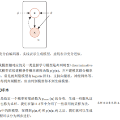Hypergraph data, which capture multi-way interactions among entities, are becoming increasingly prevalent in the big data eta. Generating new hyperlinks from an observed, usually high-dimensional hypergraph is an important yet challenging task with diverse applications, such as electronic health record analysis and biological research. This task is fraught with several challenges. The discrete nature of hyperlinks renders many existing generative models inapplicable. Additionally, powerful machine learning-based generative models often operate as black boxes, providing limited interpretability. Key structural characteristics of hypergraphs, including node degree heterogeneity and hyperlink sparsity, further complicate the modeling process and must be carefully addressed. To tackle these challenges, we propose Denoising Diffused Embeddings (DDE), a general generative model architecture for hypergraphs. DDE exploits potential low-rank structures in high-dimensional hypergraphs and adopts the state-of-the-art diffusion model framework. Theoretically, we show that when true embeddings are accessible, DDE exactly reduces the task of generating new high-dimensional hyperlinks to generating new low-dimensional embeddings. Moreover, we analyze the implications of using estimated embeddings in DDE, revealing how hypergraph properties--such as dimensionality, node degree heterogeneity, and hyperlink sparsity--impact its generative performance. Simulation studies demonstrate the superiority of DDE over existing methods, in terms of both computational efficiency and generative accuracy. Furthermore, an application to a symptom co-occurrence hypergraph derived from electronic medical records uncovers interesting findings and highlights the advantages of DDE.
翻译:暂无翻译




